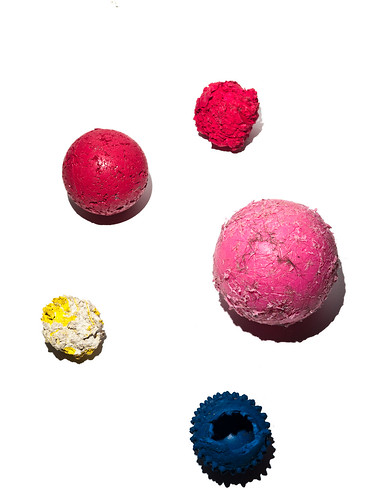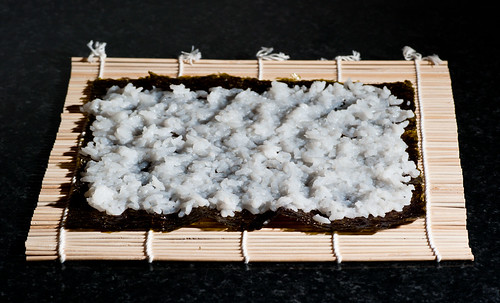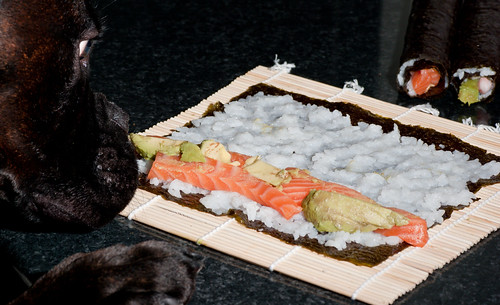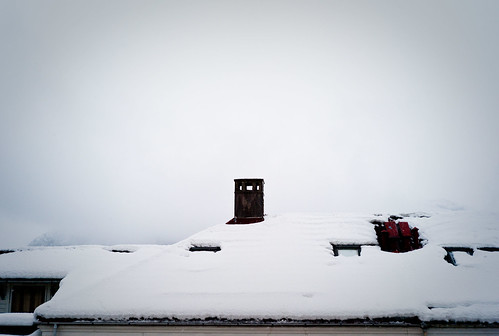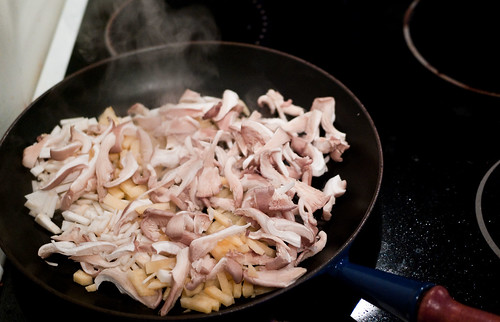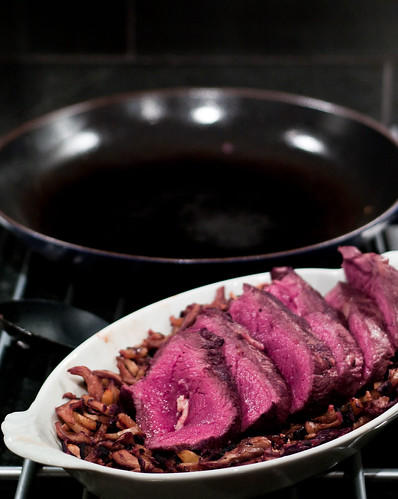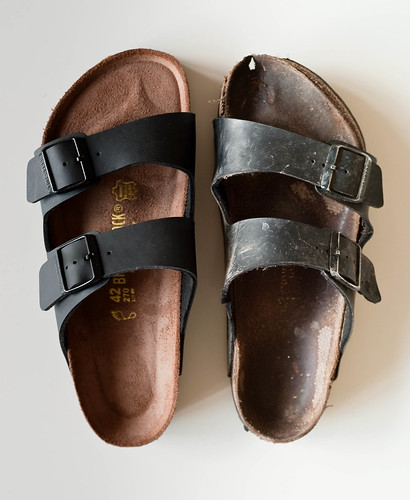IgA nephropathy is the most common of the glomerulonephropathies but has a highly variable out come for the individual patient. While about 30% progress in to end-stage renal disease (ESRD) in about twenty years, the rest can live with their IgA nephropathy for a long time without clinical progression
The new Oxford classification of IgA nephropathy was published recently (
1,
2). It identifies histopathological signs for mostly predicting the out come for patients with IgA nephropaty. The first part of this study was the establishment of reproducability of different pathological lesions. Then these were used to study biopsies from patients with known out-come (6.5 years follow up time) to find lesions that predict progression.
What they find is that mesangial and endocapillary hypercellularity and the classic markers of chronic renal damage (tubular atrophy/interstitial fibrosis and segmental glomerulosclerosis) predict the loss of 50% of baseline GFR or progression to ESRD, independently of clinical parameters, such as blood pressure, proteinuria and GFR. Tubular atrophy and interstitial fibrosis are grouped as one because they correlate with an R = 0.99. In addition this entity correlates with other signs of advanced chronic renal damage: interstitial inflammation R = 0.9, and global glomerulosclerosis R = 0.8.
It is important to note here that the correlations were made for quite pronounced lesions. For example, tubular atrophy/interstitial fibrosis of <25% of the biopsy area had an out-come similar to those with out any lesion, and a quantitative measure for mesangial hypercellularity was comparable to just determining if more than 50% of the present glomeruli were affected.
An all new study by Tsuboi and others in the Journal of the American Society of Nephrology (
3) presents an interesting correlation between glomerular density and progression. The selection of IgA nephropathy patients with a only slightly reduced renal function (>60 ml/min/1.73 m
2) is the main strong point of the study. This includes patients with early IgA nephropathy, something which has not been so well studied before. In this way it complements the Oxford classification where GFR >30 ml/min/1.73 m
2 was the inclusion criteria.
A striking result is that in these patients with a mildly reduced renal function, none of their histopathological scores or clinical parameters predicted anything within five years, only after ten years did they manage to show significant correlations. In comparison with the Oxford classification study this can be interpreted as if progression accelerates; with an inclusion of patients with GFR >30 ml/min/1.73 m
2 and six years follow up 22% of the patients reached end points (-50% GFR or ESRD), while Tsuboi et al. found that from GFR >60 ml/min/1.73 m
2 and ten years follow up 25% of the patients reached those same end-points.
What is interesting is that several of the significant variables in the Oxford classification does not appear to correlate with progression in these patients with only slightly reduced GFR. For example interstitial fibrosis and mesangial hypercellularity, as well as well studied clinical parameters such as proteinuria and hypertension.
The main finding, as can be read in the title, was that glomerular density (the number of non-globally-sclerotic glomeruli per area of biopsy) is an independent predictor of progression in IgA-nephropathy with a mild decrease of renal function. This means that a low nephron endowment is bad for you, in IgA nephropaty as well as in many other diseases . Something the authors discuss quite thouroughly.
In the Oxford classification they did look at the number of glomeruli, but only in relation to the other scores, where no correlation was found. Nothing is written about the possible correlation with out-come in these patients, and a formal measure of glomerular density was not calculated. This means that glomerular density may still be a good predictor in patients with a more advanced disease.
This gives me the impression of a two step determination of progression:
- A low nephron number makes you more likely to progress from an IgA nephropaty with mild renal function impairment.
- Progression to a GFR <60>2 with clinical features such as high blood pressure and proteinuria, together with signs of chronic renal damage on biopsy (interstitial fibrosis, tubular atrophy, global sclerosis, segmental sclerosis, inflamation and mesangial proliferation) makes you even more likely progress further.
In short, if you don't progress it's good, if you do it's a Bad Thing(tm). This should mean that a decrease in GFR is prognostic for further decreases, which sounds logical.
- The Oxford classification of IgA nephropathy: rationale, clinicopathological correlations, and classification. Working Group of the International IgA Nephropathy Network and the Renal Pathology Society, Cattran DC, Coppo R, Cook HT, Feehally J, Roberts IS, Troyanov S, Alpers CE, Amore A, Barratt J, Berthoux F, Bonsib S, Bruijn JA, D'Agati V, D'Amico G, Emancipator S, Emma F, Ferrario F, Fervenza FC, Florquin S, Fogo A, Geddes CC, Groene HJ, Haas M, Herzenberg AM, Hill PA, Hogg RJ, Hsu SI, Jennette JC, Joh K, Julian BA, Kawamura T, Lai FM, Leung CB, Li LS, Li PK, Liu ZH, Mackinnon B, Mezzano S, Schena FP, Tomino Y, Walker PD, Wang H, Weening JJ, Yoshikawa N, Zhang H. Kidney Int. 2009 Sep;76(5):534-45. Epub 2009 Jul 1. PubMed PMID: 19571791.
- The Oxford classification of IgA nephropathy: pathology definitions,correlations, and reproducibility. Working Group of the International IgA Nephropathy Network and the Renal Pathology Society, Roberts IS, Cook HT, Troyanov S, Alpers CE, Amore A, Barratt J, Berthoux F, Bonsib S, Bruijn JA, Cattran DC, Coppo R, D'Agati V, D'Amico G, Emancipator S, Emma F, Feehally J, Ferrario F, Fervenza FC, Florquin S, Fogo A, Geddes CC, Groene HJ, Haas M, Herzenberg AM, Hill PA, Hogg RJ, Hsu SI, Jennette JC, Joh K, Julian BA, Kawamura T, Lai FM, Li LS, Li PK, Liu ZH, Mackinnon B, Mezzano S, Schena FP, Tomino Y, Walker PD, Wang H, Weening JJ, Yoshikawa N, Zhang H. Kidney Int. 2009 Sep;76(5):546-56. Epub 2009Jul 1. PubMed PMID: 19571790.
- Glomerular Density in Renal BiopsySpecimens Predicts the Long-Term Prognosis of IgA Nephropathy. Tsuboi N, Kawamura T, Koike K, Okonogi H, Hirano K, Hamaguchi A, Miyazaki Y, Ogura M, Joh K, Utsunomiya Y, Hosoya T. Clin J Am Soc Nephrol. 2009 Nov 19. [Epub ahead of print] PubMed PMID: 19965542; PubMed Central PMCID: PMC2801658.

